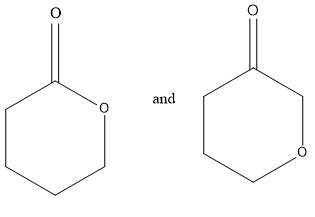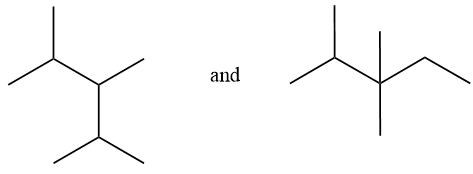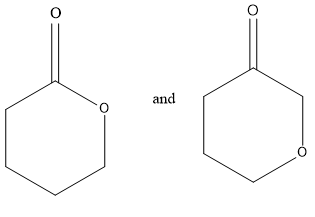
Which are position isomers?
(A)

(B)

(C)

(D)





Answer
574.5k+ views
Hint: Position isomers are structural isomers with the same number of atoms and different spatial arrangement of atoms. Changes in the functional group do not come under position isomers.
Complete step by step answer:
Isomers are molecules with identical molecular formulas, that is, they have the same number of atoms of each element, but distinct arrangements of atoms in space. Isomerism is the existence or possibility of isomers. Isomers do not necessarily share similar chemical or physical properties.
Position isomers are based on the movement of a functional group in the molecule. These are constitutional isomers that have the same carbon skeleton and the same functional groups but differ from each other in the location of the functional groups on or in the carbon chain.
Considering option (A),

In this, first compounds have ester functional groups and other compounds have ether and ketone functional groups present. Therefore, these are functional group isomers.
Considering option (B),

In this option, the first compound has an acyl chloride functional group and the second compound has an aldehyde functional group. Therefore, these are functional group isomers.
Considering option (C),

In this option, the first compound has anhydride functional group and the second compound has ketone and ester functional group. Therefore, these are functional group isomers.
Considering option (D),

In this option, the first compound has substitution on 2,3,4 carbon numbers with 5 carbon chain length. And in the second compound, substitution is on 2 and 3 carbon atoms with 6 carbon chain length. Therefore, these are positional isomers.
So, the correct answer is “Option D”.
Note: There are different types of isomers. Two broad categories of isomers are – Structural isomers and Stereoisomers. Types of structural isomers are Chain isomers, position isomers, Functional isomers. Stereoisomers are of two types – Geometric isomers, optical isomers.
Complete step by step answer:
Isomers are molecules with identical molecular formulas, that is, they have the same number of atoms of each element, but distinct arrangements of atoms in space. Isomerism is the existence or possibility of isomers. Isomers do not necessarily share similar chemical or physical properties.
Position isomers are based on the movement of a functional group in the molecule. These are constitutional isomers that have the same carbon skeleton and the same functional groups but differ from each other in the location of the functional groups on or in the carbon chain.
Considering option (A),

In this, first compounds have ester functional groups and other compounds have ether and ketone functional groups present. Therefore, these are functional group isomers.
Considering option (B),

In this option, the first compound has an acyl chloride functional group and the second compound has an aldehyde functional group. Therefore, these are functional group isomers.
Considering option (C),

In this option, the first compound has anhydride functional group and the second compound has ketone and ester functional group. Therefore, these are functional group isomers.
Considering option (D),

In this option, the first compound has substitution on 2,3,4 carbon numbers with 5 carbon chain length. And in the second compound, substitution is on 2 and 3 carbon atoms with 6 carbon chain length. Therefore, these are positional isomers.
So, the correct answer is “Option D”.
Note: There are different types of isomers. Two broad categories of isomers are – Structural isomers and Stereoisomers. Types of structural isomers are Chain isomers, position isomers, Functional isomers. Stereoisomers are of two types – Geometric isomers, optical isomers.
Recently Updated Pages
A man running at a speed 5 ms is viewed in the side class 12 physics CBSE

State and explain Hardy Weinbergs Principle class 12 biology CBSE

Which of the following statements is wrong a Amnion class 12 biology CBSE

Two Planoconcave lenses 1 and 2 of glass of refractive class 12 physics CBSE

The compound 2 methyl 2 butene on reaction with NaIO4 class 12 chemistry CBSE

Bacterial cell wall is made up of A Cellulose B Hemicellulose class 12 biology CBSE

Trending doubts
What are the major means of transport Explain each class 12 social science CBSE

Which are the Top 10 Largest Countries of the World?

Draw a labelled sketch of the human eye class 12 physics CBSE

Explain sex determination in humans with line diag class 12 biology CBSE

Give 10 examples of unisexual and bisexual flowers

State the principle of an ac generator and explain class 12 physics CBSE




